 Churches of Christ & Christian Churches in the Pacific Northwest JOSEPHINE COUNTY, OREGON |
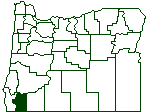
Expanded Nov. 24, 2005 |
Golden | Grants Pass | McAllister / Merlin | Williams
Next Chapter . . . Pioneer Menu . . . Search
The county was named for Josephine Rollins, the daughter of the
discoverer of gold in Josephine Creek, 1851.
Grants Pass First Christian
Mapquest map
Originally called Perkinsville, the community was renamed Grants Pass in 1865. One woman and one man met for worship in 1885 and became the first members of the Church of Christ in Grants Pass. By the end of that year, 14 people were attending services.
The 14 included Mr. and Mrs. Colvig, Mr. and Mrs. Crockett, Mr. and Mrs. Green, Mr. and Mrs. Gumpton, Mr. and Mrs. Jennings, Mr. and Mrs. Neely, and Mr. and Mrs. Woodfolk. Nearly all records prior to 1913 have been lost but some have been reconstructed from newspaper reports. The church was launched with the leadership of Martin Peterson and met in the skating rink. Preacher Peterson was living at Jacksonville at the time. The congregation did not endure.
The church was reorganized in 1888 and met in the city hall. There were 20 members in the resurrected group. One of the elders, Stephen Jewell, was also County Judge. Judge Jewell preached regularly for the congregation during its first four years. He also participated in the dedication of the church building at Golden. E. K. Taylor also preached some during this time. He reported 54 additions to the church during a meeting in the summer of 1892.
In 1893 the church built at Fourth and H Streets, in the west corner of the intersection. (The streets are not north and south.) There was a French Laundry on the next lot in back of the building.
Eli Fisher from Medford was assisting the congregation during this time. The Rogue River Courier reported that the dedication services were held on June 10, 1884.
Those to be baptized were immersed in the Rogue River at the south end of 8th Street.
Ephraim Badger of Provolt preached here for a short time followed by a Mr. Underwood.
John B. Lister was the preacher for a few months in 1896 and Jesse M. Hunter was there from 1896 to 1907.
A published newspaper report says of Frederic M. Brooke in 1911:
Golden
Mapquest map
The name of the town itself may bear the Ruble mark. Ruble family researcher Wayne Dykstra points out that the family had moved to Oregon from Barry County, Missouri. There is a Golden in Barry County, a short drive north of Eureka Springs, Arkansas. Other Oregon towns were named for the home town of their founder. William Newby named McMinnville for his home town of McMinnville, Tennessee. Monmouth was named by its founders who came from Monmouth, Illinois. Bethel was named by Glen O. Burnett for Bethel, Missouri.
The Golden church first met in a vacant log cabin and sometime in a Ruble residence. The time of establishing the congregation is not recorded, but it was very apt to be about the time the Ruble families moved to the area. The sons included Walter, William Newton, Schuyler and David.
The Church of Christ building was constructed in 1892 with William Newton Ruble as the carpenter. The photo shows the building at an early time and the the current condition of the building can be seen in the color photo below.
Artists still use the building as a subject. One such painting hangs near the door of the Kellenberger Library on the campus of Northwest Christian College in Eugene, Oregon.
Not only was Bill Ruble the carpenter, he soon did most of the preaching at the little church, as his father did not feel competent to speak to public audiences. He was set aside to this work by Judge Stephen Jewell in his capacity as an elder of the Grants Pass church.
Bill's work for the Lord's cause was greatly enhanced by his wife Sarah McKay Ruble. His brother Schuyler Ruble was in charge of the Sunday School classes. This congregation carried the Ruble family organ from next door for singing on occasion.
The Rubles lived just west of the church building. Some of the original trees in their orchard still bear fruit.
While Bill Ruble taught the adults on the Lord's Day and Schuyler Ruble and his wife Abigail Smith Ruble made sure the children had their proper teaching on the Lord's Day, their attractive sister Columbia taught the children on week days. She was the first school teacher in Golden, holding classes in a log cabin in the days before the first school house was built.
Originally a gold mining town, the church was a power in the community during the heyday of placer mining. To this day we can tell it was a potent force because it was one of two churches and there were no saloons and researchers have not been able to establish that any dancing took place in those "Ruble years."
Norman Weis quotes Golden old timer Harold McIntosh as saying, "I finally gave up and built a dance hall down at Wolf Creek. Had real good times there, but church folks still give me trouble. Used to parade around the dance hall prayin' away the devil - was fanatakism - pure fanatakism." (sic)
Norman D. Weis in Ghost Towns of the Northwest, page 72. Those Golden miners that wanted to drink and dance traveled to yet another community in the vicinity where some other heirs of the Restoration Movement sponsored the dances and had signed on petitions to obtain liquor licenses for two of the local saloons.
Standing on the porch of the ancient building (now a Community Church) is Harry Orn, retired Director of the Oregon Christian Evangelistic Fellowship, a church planting organization.
Golden is reached by exiting I-5 (southbound) at the Wolf Creek exit, proceeding through town, back under the freeway and continuing on Coyote Creek Road 3.5 miles.
A fund has been created to restore the community of Golden. It is Golden Coyote Wetlands, Inc., P.O. Box 38, Wolf Creek, Oregon 97497.
Additional information about the Ruble family, their children and property, is available in the excellent full-length book First There Was Twogood - A Pictorial History of North Josephine County by Larry L. McLane. Published in 1995, it is available from Sexton Enterprises, 1187 Placer Road, Sunny Valley, Oregon.
The historic McAllister Postoffice is one mile north of present-day Merlin on the Southern Pacific rail line. The post office was opened in 1885 as Brandt, then quickly renamed McAllister. In 1891 the town name was again changed, this time to Merlin because of the pigeon hawks seen in the area.
The census records show that most family heads were either gold miners or farmers.
Victor Hoven lists McAllister as having a church in 1887 and the Disciples of Christ Yearbook for 1888 lists a congregation of 36 people. "Elder Pollard" was the contact person. The church is not listed in the 1892 Yearbook.
The little congregation that met here did not report much about themselves to the outside world. Dr. Swander notes their beginning as 1893. It is likely that the church started much earlier. Without a doubt, preacher Ephraim Badger and his family frequently attended the church meetings. They lived a mere five miles away (as the crow flies) at Provolt.
Their famous family was the Davidsons. Elijah B. Davidson had arrived in 1867. Ten years later, along with his brother Carter, he discovered the Oregon Caves. According to Jerry Rushford, Elijah preached for many years in Oregon and died in 1888, but his wife Salome was still present in 1893. There were many Davidson families at Williams, earlier called Williamsburg.
Next Chapter:
Klamath County or back to Pioneer Menu
To DOCHS 3/02
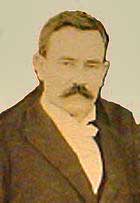
There is a profile of Mr. Peterson.
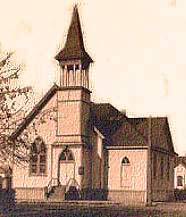
There is a profile of Ephraim Badger.
Mr. Brooke has been untiring in his efforts to bring about this unity of hearts and hands in the Christian Church organization and he has been so thoroughly successful in his undertaking that there is not a more enthusiastic body of workers for the great cause of humanity in the city today, than that of the Church of Christ of Grants Pass, Oregon.
The same newspaper article tells of the purchase of a piano for the church which may point to the congregation having been a capella prior to that.
Tucked away near Wolf Creek on Interstate 5 north of Grants Pass stands the ghost town of Golden. William and Ruth Ruble and their family, pioneers of 1853, operated a nursery in the Eola Hills, west of Salem. William decided to try his hand at gold mining and so moved to this area in 1878. Ruble and his sons were very successful in their mining ventures.
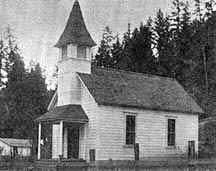
Larry L. McLane
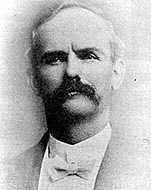
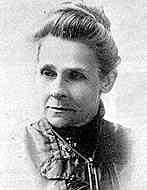
There is a profile for the Ruble family.
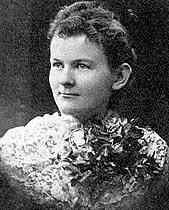
Larry L. McLane
More can be learned about the community of Golden on this link.
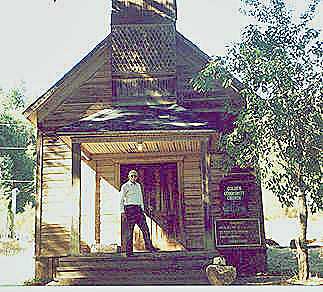
McAllister / Merlin Mapquest map
Williams Mapquest map
